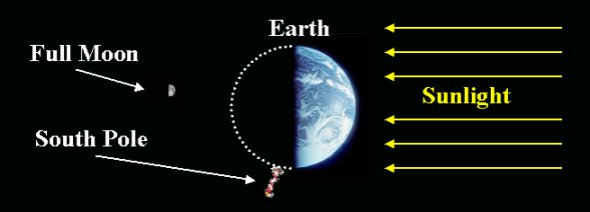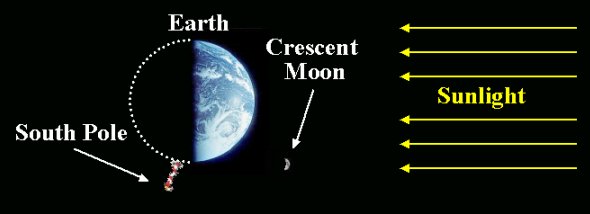 Nathan Tift's South Pole Journal
Nathan Tift's South Pole Journal
Friday, May 18, 2001
Southern Lights
I have been working the night shift since the end of January. Last week I switched to days and Meghan went to nights. It is quite a change. Not that there is any noticeable difference between night and day here when stepping outside. It is as dark at noon now as it is at midnight. Last week marked the onset of astronomical twilight for the South Pole. That means the sun is eighteen degrees below the horizon. There is no hope of seeing even the faintest glow from our solar friend for quite a while.
The sun is something that most humans see everyday. It has been the source of nearly all light and power for millennia. Lack of sunlight has been identified as the cause of depression in some people and the lower levels of sunlight in winter can trigger Seasonal Affective Disorder.
So now that there is no sunlight here whatsoever, many people wonder how it affects me. I would say the overall negative effect on me is slight to none at all. I like the darkness. After a whole summer of glaring sunshine, darkness is almost comforting. I have always liked nighttime. And here, I can stay up through the longest night in the world: six months.
One might think we counter the outside darkness with inside lightness. Quite the opposite seems to be true. Although there are surely lights inside, most rooms are pretty dim. The Galley always had every light on in the summer. Now it is often pretty dark.
The weather office has always been one of the darkest workspaces on station. The overhead fluorescent lights are rarely turned on. We just have one lamp on over the desk where we record observations. The screens of our four computers (usually in screen-saver mode) provide the only other constant light for the room. There is actually a row of fluorescent lights on our back wall behind the instrument cabinets that provide full-spectrum light. When on, they look to me like afternoon sunlight beaming through a row of open windows. But for some reason, it bothers me considerably to have them on, so I only use them when absolutely necessary.
Though the sun is never up, that doesn't mean it's totally dark outside. At such a high elevation so far from any city lights we have some of the best stargazing conditions in the world through very pure, clean, dry air.
The stars of the Southern sky are a constant reminder to a Northerner of how far away home actually is. But the uniqueness and distinctiveness is something that I savor and enjoy.
And then there are the aurorae. The Southern Lights. Wow! Their greenish glow fills the sky nearly every day. They are huge, nebulous creatures that dance across the heavens to the sweet unheard music of the cold, still polar air. They are truly a wonder to behold.
The sun is near the peak of activity in its eleven-year cycle. It is this activity -- solar flares and sunspots -- that cause an increase in solar wind. And when caught in the sails of the Earth's magnetic field, this wind illuminates the polar skies as Northern and Southern Lights to the awe of the inhabitants of the high latitudes. What a treat to be here at the apex of auroral brilliance!
Another prominent light in the sky is the moon. Our lunar friend visits for about twenty days at a time, for all but the very first and last days of its cycle. It is highest in our sky when it's full, and sets as a waning crescent, squished by the refractive atmosphere on it's way down below the horizon. About ten days later it returns, slowly but surely laying claim to our sky as it circles about and waxes to its pinnacle. When the moon is full and the sky is clear, there is no other light necessary.
 |
 |


